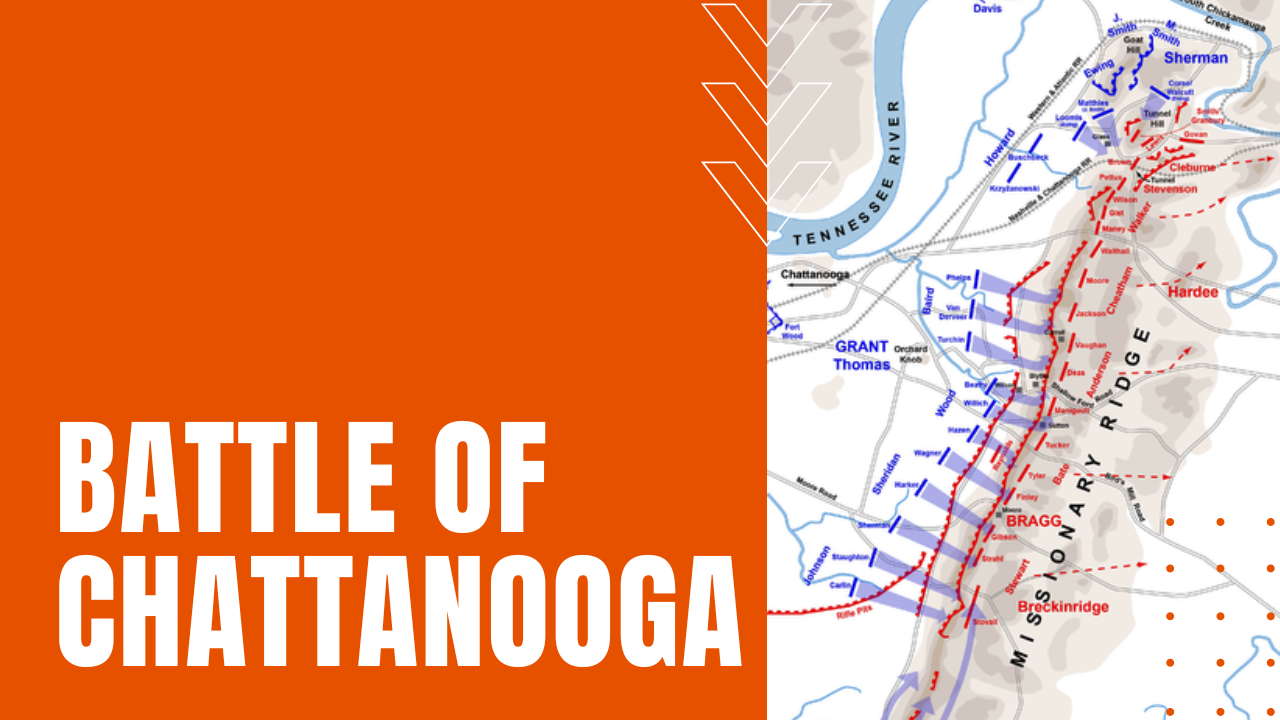Battle of Chattanooga

Following the Confederate’s victory at Chickamauga in September of 1863, the Union army retreated to Chattanooga Tennessee to take advantage of railheads critical to the resupply of the Union army. In response, Confederate General Braxton Bragg laid siege to the city, prompting President Abraham Lincoln to send Major General Ulysses S. Grant to Chattanooga to break the Confederate stranglehold.
Rock of Chickamauga
Beginning on November 23rd, 1863, Grant sent General George H. Thomas—Known as the Rock of Chickamauga, after he stood his ground during the battle of that same name—to test the strength of the Confederate’s center, resulting in a resounding Union victory when Rebel forces at Orchard Knob were forced to retreat up Missionary Ridge.
Union Advance
The following day, Union Major General Joseph Hooker captured Lookout Mountain, which soon became known as the Battle Above the Clouds, before advancing on Missionary Ridge in a three-pronged offensive, which was marred by costly miscommunication errors on both sides of the conflict, while Confederate loses were further exacerbated by improper trench placements, leading to friendly fire casualties when Confederate soldiers retreated through the main line-of-fire.
Rebel Retreat and Rout
On November 25th, Grant ordered Thomas to attack the Confederate’s center at Missionary Ridge, and as the Rebels retreated up the hill, Hooker’s forces advanced from the north, leading to an overwhelming route of the Confederate army. The three-day running battle led to 5,824 Union casualties, including 753 killed, 4,722 wounded and 349 missing, while the Confederates suffered an estimated 6,000 to 8,000 combined casualties—far less costly to both sides than the recent Battle of Chickamauga, but egregious nonetheless.
Missed Opportunity
While some historians speculate that Grant’s failure to pursue the retreating Rebels unnecessarily extended the ongoing bloodbath of the Civil War, yet by securing the vital railheads at Chattanooga allowed Sherman’s forces to capture Atlanta in early September of 1864, followed by Sherman’s November March to the Sea, making the Battle of Chattanooga, yet another crushing defeat to the Confederate’s ability to wage war.
